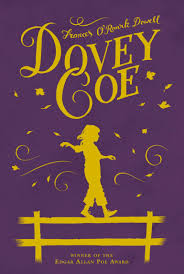
Nightjohn
Gary Paulsen (Young Adult Fiction)
“It was in the flower bed that I first heard about Nightjohn. Not by name, but by happening.” Sarny remembers that moment well. That and other moments—both horrible and hopeful—that has happened on Master Clel Waller’s plantation: the beatings, the constant humiliation, the rapes, but also the songs and stories that provide some comfort to her and her fellow slaves. But most precious of all were the moments spent with Nightjohn for he brought with him freedom. Freedom that only knowledge could bring, and Nightjohn was bringing it to Sarny and anyone brave enough to accept this unique and powerful gift.
Gary Paulsen notes that the events written in Nightjohn (with the exception for variations in time and character identification and placement) are true and actually happened. Knowing the atrocities, brutality, and savagery that happened during the period in American history where slavery was practiced and largely accepted, the story of Sarny and what she witnessed and experienced should come as no shock. Unfortunately, it does for Paulsen is relentless in his detail and spares no sensibilities when it comes to depicting the treatment of slaves and the punishment ravaged upon those attempting escape. The book is recommended for ages 12 and up and although the message is important and the details written are accurate, I would suggest a slightly higher starting age due to several highly graphic scenes and some mature subject matter.
I appreciated the theme of this book and the heroism shown by Nightjohn who had successfully acquired freedom in the north, but chose to return south so that he could teach slaves to read and write. During one pivotal scene, Sarny’s “adoptive” mother, Mammy, asked Nightjohn why teaching the slaves to read and write mattered. “They have to be able to write,” Nightjohn responded. “They have to read and write. We all have to read and write so we can write about this—what they doing to us. It has to be written.” The singular problem I had with Paulsen’s book was the overuse of violence. Paulsen describes what runaways endured when the dogs finally caught up with them and he did so not once, not twice, but three times. The reader understands the gruesomeness of this action and the utter deprave satisfaction the master gets in seeing a man or woman being literally torn to shreds, but to restate it numerous times was borderline gratuitous.
Nightjohn is a quick read (the hardback edition is ninety-two pages with large typeface and a narrow page width), but its characters and their unfailing faith, their struggle for dignity, and their fight for a better life will have a long-lasting impact on you and will forever change how you view the everyday things that are often taken for granted. In that respect, Nightjohn has given each of us a very valuable lesson.
(Reviewer’s Note: In 1997, Paulsen wrote Sarny: A Life Remembered, a sequel to Nightjohn, which follows Sarny after she fled the Waller plantation in the last days of the Civil War.)
Rating: 4/5
*Book cover image attributed to www.amazon.com
**Want more? Visit our Facebook page at www.facebook.com/thedustyjacket




